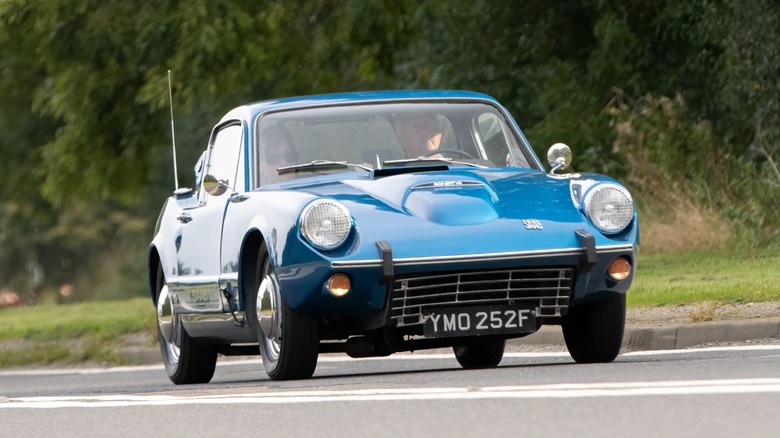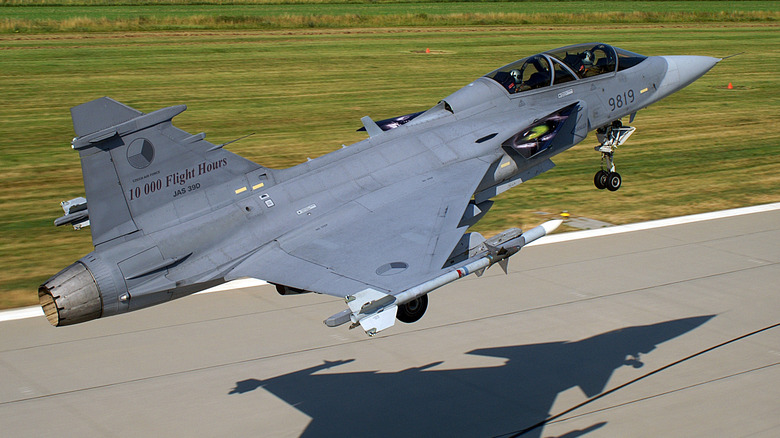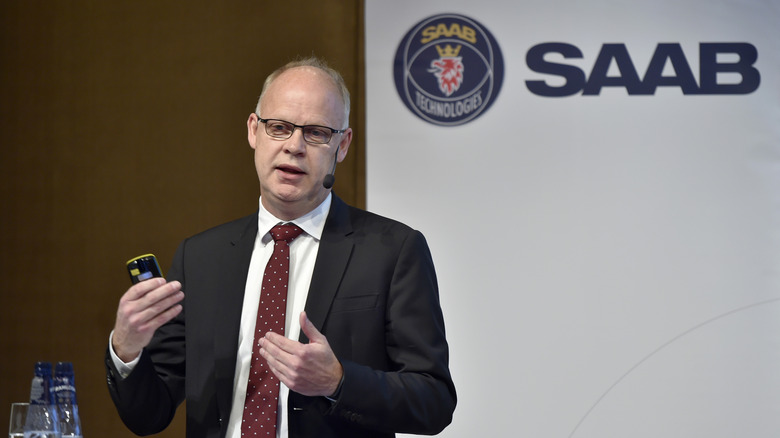From The Roads To The Skies: Whatever Happened To Saab?
Back in the 90s and 2000s, Saab sedans were a common sight on the roads, their iconic griffin logos glinting in the sun across the world. Nowadays, Saab automobiles are almost extinct, and they scored a top spot on our list of defunct car brands that we wish still existed. But although the Saab Automobile division went bankrupt in 2011, the Saab AB parent company is still thriving in the aircraft and defense industry. So what happened to those quirky cars?
Saab has existed for a century, but survival wasn't always ensured. Through all the market crashes, world wars, and technological revolutions, the Swedish manufacturer teetered between massive profits and near bankruptcy. Their auto division's market niche as purely expensive, luxury cars also didn't help. So when General Motors (GM) purchased a majority share of auto production in 1990, the fate of Saab sedans diverged dramatically from its parent company.
These days, the Saab Automobile division is no more, while the original Saab AB is booming. Major defense contracts with countries like Sweden, the US Air Force, and the United Arab Emirates have carried the tech giant to new innovative heights. Saab engineers are responsible for modern advancements in radar, naval, and air technology, and we expect much more to come. Sadly, we won't be seeing any new Saab cars driving around in the 21st century.
The brief history of Saab: A journey of many turns
Saab is an acronym of "Svenska Aeroplan Aktiebolaget," which means "The Swedish Aeroplane Corporation." Founded by AB Bofors in 1937, the company quickly scaled up production as Europe armed itself in anticipation of World War II. Vicious acquisitions of competing companies helped it grow even faster, and exclusive contracts with the Swedish government made Saab the main name for aircraft manufacturing.
After the war, Saab created an automobile division, launching its first model in 1949. Meanwhile, the parent company continued to fulfill defense contracts, producing radar, submarine, and aircraft technology. For example, the Saab 32 Lansen aircraft was so ahead of its time that it served the Swedish Air Force for 41 years.
Defense contracts were Saab's bread and butter, but the world soon associated Saab with their unique cars. Loyalists lauded the quality of Saab sedans, while budgeters lamented the luxury prices. Regardless of the reputation, however, the division was struggling.
In 1989, the division separated from its parent and became an independent company called Saab Automobile AB. During the restructuring, General Motors purchased a majority share. The American auto giant released the most iconic models during this period.
After the death blow of the 2008 recession, Saab Automobile AB filed for bankruptcy in 2011. The broke estate was purchased by Spyker Cars N.V. and then by National Electric Vehicle Sweden (NEVS). In a last-ditch effort to save the company, NEVS released the 2012 Saab 9-5 SportComb, but it was promptly banned for sale in the US. Then, the final straw came from Saab itself, when Saab AB prohibited NEVS from using its name in 2014. Saab Automobile was officially defunct.
[Featured image by Milan Nykodym via Wikimedia Commons | Cropped and scaled | CC BY 2.0]
What does Saab manufacture these days?
Though the Saab automobile hit the end of the road, the parent company continues to fly high. It's a global supplier of advanced command, weapons, and control systems. They also have a long line of high-tech aircraft, with some of the coolest fighter jets we've ever seen. Saab technologies are used in both manned and unmanned crafts, and they even extend to civilian domains like traffic management.
But where Saab really shines is in their radar products. Their sensor systems are some of the best in the world, with applications in surveillance, electronic warfare, underwater facilities, and far-range antenna technology. Globally, the Saab name is associated with a failed auto manufacturer, but that reputation isn't entirely fair. In truth, Saab is a global leader in advanced military, aircraft, and communications technology, and their 100-year legacy continues to this day.


